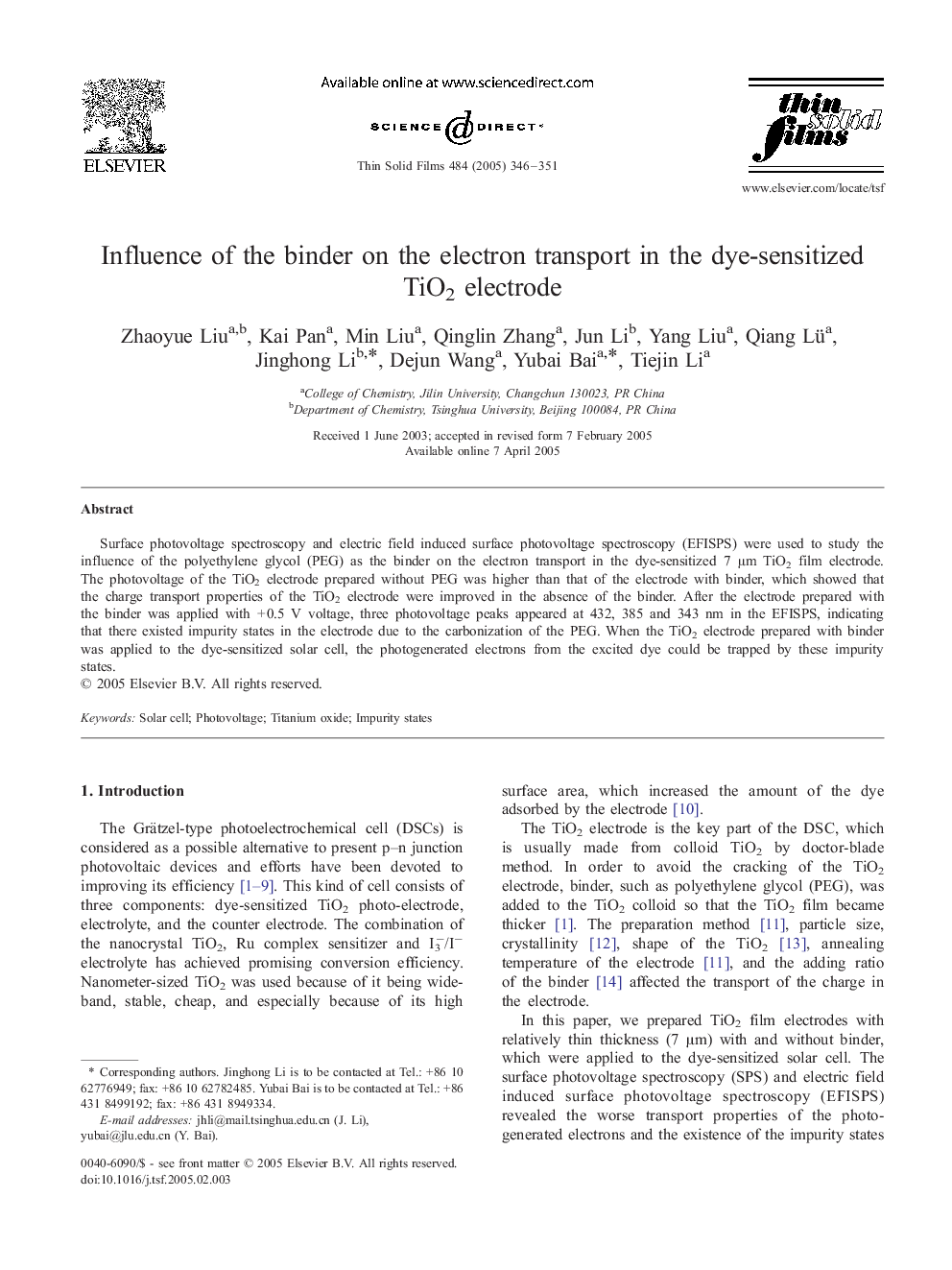| Article ID | Journal | Published Year | Pages | File Type |
|---|---|---|---|---|
| 9812567 | Thin Solid Films | 2005 | 6 Pages |
Abstract
Surface photovoltage spectroscopy and electric field induced surface photovoltage spectroscopy (EFISPS) were used to study the influence of the polyethylene glycol (PEG) as the binder on the electron transport in the dye-sensitized 7 μm TiO2 film electrode. The photovoltage of the TiO2 electrode prepared without PEG was higher than that of the electrode with binder, which showed that the charge transport properties of the TiO2 electrode were improved in the absence of the binder. After the electrode prepared with the binder was applied with + 0.5 V voltage, three photovoltage peaks appeared at 432, 385 and 343 nm in the EFISPS, indicating that there existed impurity states in the electrode due to the carbonization of the PEG. When the TiO2 electrode prepared with binder was applied to the dye-sensitized solar cell, the photogenerated electrons from the excited dye could be trapped by these impurity states.
Related Topics
Physical Sciences and Engineering
Materials Science
Nanotechnology
Authors
Zhaoyue Liu, Kai Pan, Min Liu, Qinglin Zhang, Jun Li, Yang Liu, Qiang Lü, Jinghong Li, Dejun Wang, Yubai Bai, Tiejin Li,
